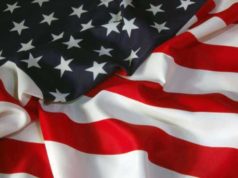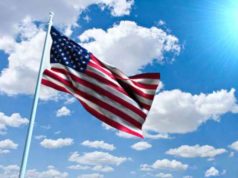Table of Contents

Article 2 of the US Constitution: The Executive Branch Explained
The US Constitution outlines the powers and limits of the federal government, with each article covering a distinct branch of government. Article 2 of the Constitution establishes the Executive Branch, which comprises the President, Vice President, and their Executive Officers. The article outlines the role and responsibilities of the Executive Branch, and it’s important to understand its terms because they affect how the President and his team perform their duties. Here are the key points to help you understand Article 2 of the US Constitution.
Structure of the Executive Branch
The Executive Branch is headed by the President of the United States, who serves in a position of power for a four-year term. The President has a Vice President, who is responsible for taking over the Presidential duties in the event of the President’s inability to perform them. In addition to the President and Vice President, there are 15 executive departments and various other executive agencies responsible for carrying out the President’s will and enforcing federal law.
Powers and Duties of the President
Article 2 of the Constitution grants the President broad powers and duties to oversee the Executive Branch. These include serving as the Commander-in-Chief of the US Armed Forces, executing federal laws, and negotiating foreign treaties. The President also has the power of appointment, which allows him to fill positions in the Executive Branch, with various levels requiring different approval processes. In addition to these explicit powers, the President has several implicit powers that come with the position. These include the ability to issue executive orders, appoint federal judges, and pardon individuals for federal offenses. The President is also responsible for overseeing the administration of federal agencies, budget management, and providing leadership to the Executive Branch.
Checks and Balances on Executive Power
Article 2 of the Constitution establishes checks and balances on the President’s power to ensure that one individual does not become too powerful. For instance, the Senate holds the authority to approve presidential appointments and treaties. If the Senate does not consent, the President has to identify another candidate or negotiate a new treaty.
Another way the Constitution limits the Executive Branch’s power is through the system of divided government between the executive and legislative branches. Congress holds the authority to create and pass federal laws, and the President has to execute these laws faithfully. Congress can impeach and remove the President from office if he fails to fulfill his duties.
Conclusion
Article 2 of the US Constitution establishes the structure, powers, and limitations of the Executive Branch. The President and Vice President are the most visible members of this branch and have significant authority to carry out the Executive Branch’s duties. However, they also face limitations designed to protect against abuses of power, such as through the power of impeachment, Senate appointments, and legislative oversight. Understanding Article 2 of the US Constitution is crucial to comprehending the workings of the US government and its unique system of checks and balances.Article II of the Constitution sets forth the definition and terms of the Executive Branch of Government in the United States of America. The Executive Branch of any governmental structure is the one most likely to become powerful, thanks to the nature of executive power.
In most countries, when a dictatorship or despotic form of government forms, the despot comes from what was once the Executive Branch of the government. Indeed, in the British system of the time, a great deal of power was invested in the monarch of Britain, thus empowering the Executive Branch of that government.
Article II of the Constitution was an attempt to help define executive powers without letting them overrun the Government. It was aimed at both establishing the nature and election procedures for the Executive Branch, while also ensuring that there were some limits to the powers of that Executive Branch.
Article II has been expanded and adapted by some Constitutional Amendments over the years. The Twenty-Fifth Amendment, for example, specifically clarified Clause 6 in Section 1 of Article II of the Constitution because of its ill-defined wording. While Clause 6 would have provided for the Vice President to assume the duties for the President if the President were unable to perform them himself, it still remained vague on any number of matters, including whether or not the Vice President would become an Acting President or a full President.
The Twenty-Second Amendment was also an adaptation of Article II, under which the President could not be elected for more than two terms. The Twelfth Amendment significantly altered the way in which the electoral procedure for the Executive Branch actually functioned, thereby superseding that part of Article II of the Constitution.
These changes to Article II have helped to further define and refine the points and purposes of that Article such that no difficulties will arise from its original faulty wording or function. This is especially important as Article II, for all that it is part of an intricate system, the whole of which is important to protect and preserve deals with the branch of Government which, as has been shown through countless historical examples, is the most likely to lead to abuses of power. Ensuring that Article II of the Constitution is refined is thus critical for the stability of the overall country.
For example, if the Twenty-Fifth Amendment had never been implemented, there would not be a clearly defined system for establishing a new Vice President after a Vice Presidential vacancy and there would be no clearly defined system for a President to either establish himself as unable to fulfill his duties for the time being, or for other officers in Government to be able to establish that the President is unable to fulfill his duties for the time being. The only option would be impeachment, which would not necessarily function in certain situations.
While no President has ever been removed from power by the declaration of other officers, the fact remains that without such an Amendment, Article II of the Constitution would have had a hole in it that could have caused potential problems at a later point in time. Because Article II of the Constitution concerns the Executive Branch, however, it is most critical for that Article to be able to clearly delineate the powers of the Executive Branch in order to prevent abuses of power.

























